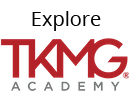
Got a question you don’t see here? Tweet us @KarenMartinOpEx and your good questions could end up here.
Lean isn’t merely about waste reduction, although waste reduction is necessary to meet the “consume the fewest resources” part of the definition. It’s also not just about process design, as offering products that customers want and building highly effective management practices and problem-solving capabilities across the organization is vital.
Building a Lean enterprise requires an organization to rethink how it designs, measures, and manages nearly every aspect of its business.
Lean and Six Sigma both include many of the same improvement tools that were popularized during the periods in which Tot Lean al Quality Management and Business Process Improvement were popular. Basic root cause analysis and process streamlining tools don’t change over time.
But Lean and Six Sigma have key differences from older methodologies. Lean, for example, offers a different perspective on process design and organizational performance improvement. The Lean approach places heavy focus on customer-defined value looking at a process – the value steam – holistically. Lean also emphasizes the role of people in process performance and, when used properly, creates extremely rapid results. These differences are providing “staying power” beyond anything we’ve experienced to date in the world of improvement. Lean is extremely effective at eliminating process “noise” – so you can see what you actually have, rather than jumping to conclusions and implementing suboptimal improvements that don’t generate the outcomes you desire.
Six Sigma relies more heavily on collecting and analyzing performance data than traditional approaches and, therefore, does a better job at reducing variation in processes with narrow performance band requirements. Its methodical and slower paced approach to improvement is best suited for processes that require data-intensive analysis.
Under the guidance of a skilled practitioner, the two approaches can work well together. But it takes a fair amount of expertise to properly determine which tool to use when. Neither tool provides a “cookie cutter” approach to continuous improvement. Similar to knowing when to use a Phillips head screwdriver and when to use a flathead, performance improvement tools must be appropriate for the problem you’re trying to solve.